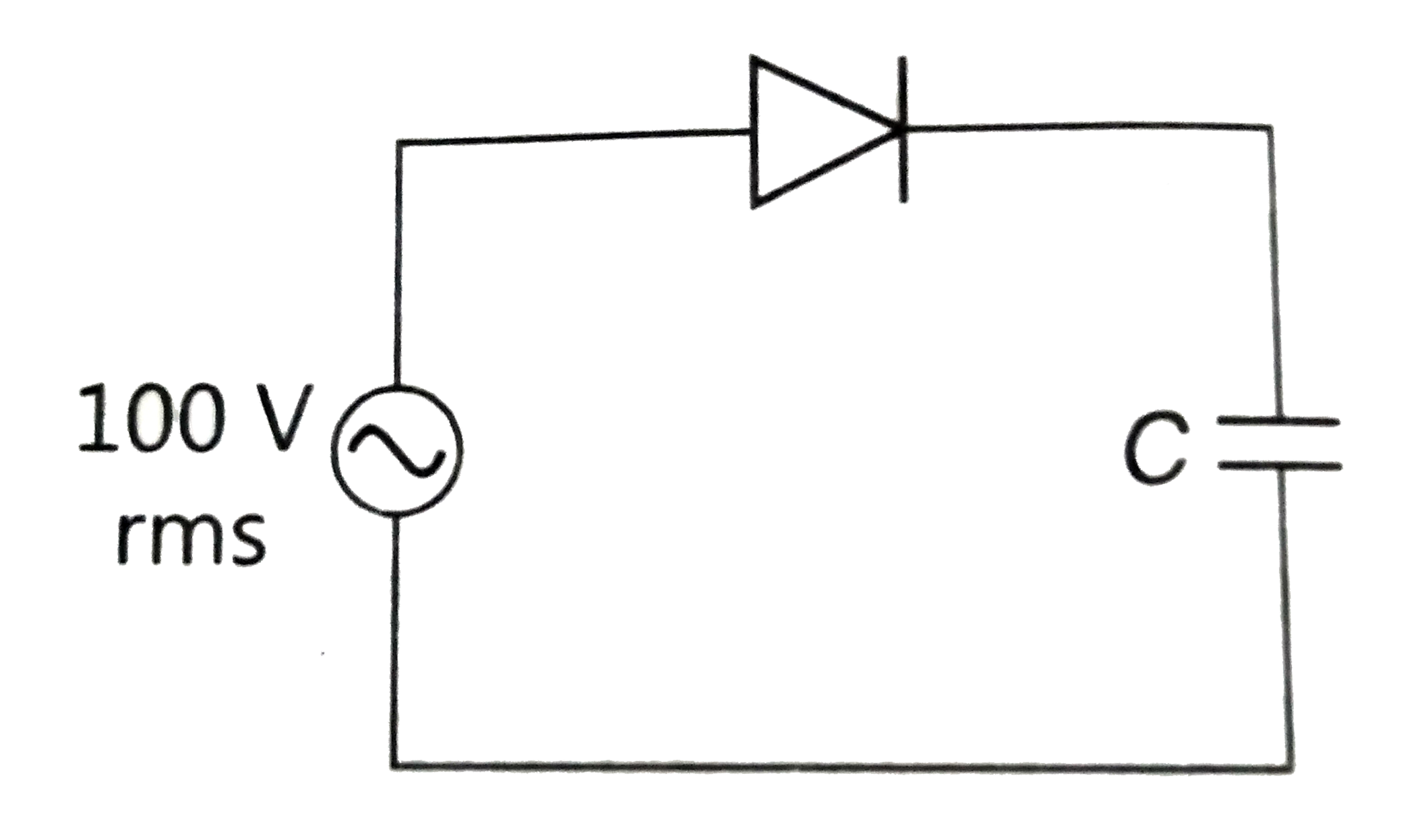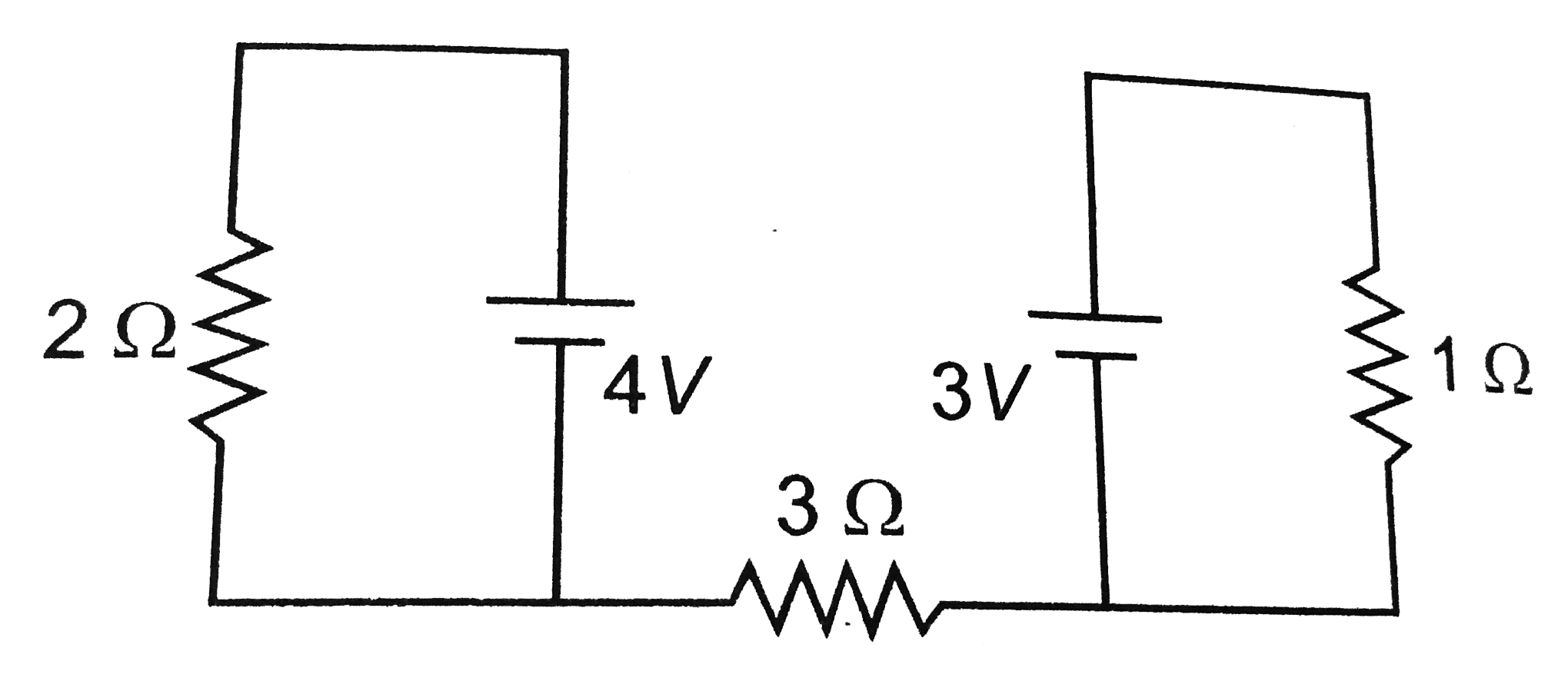An alternating voltage of 141.4V(rms) is applied to a vacuum diode as shown in the figure. The maximum potential difference across the condenser will be

A
100 V
B
200 V
C
100√2V
D
200√2V
Text Solution
The correct Answer is:B
|
Topper's Solved these Questions
- ELECTRONICSBOOK - ERRORLESS CHAPTER - ELECTRONICSEXERCISE - Graphical Questions
3 Videos
- ELECTRONICSBOOK - ERRORLESS CHAPTER - ELECTRONICSEXERCISE - Selv Evaluation Test
23 Videos
- ELECTRONICSBOOK - ERRORLESS CHAPTER - ELECTRONICSEXERCISE - Valve Electronics (Diode and Triode)
3 Videos
- ELECTRON, PHOTON, PHOTOELECTRIC EFFECT AND X-RAYSBOOK - ERRORLESS CHAPTER - ELECTRON, PHOTON, PHOTOELECTRIC EFFECT AND X-RAYSEXERCISE - Self Evaluation Test
3 Videos
- ELECTROSTATICS BOOK - ERRORLESS CHAPTER - ELECTROSTATICS EXERCISE - Ordinary Thinking Objective Questions (Electric Flux and Gauss.s Law)
28 Videos
Similar Questions
Knowledge Check
In the circuit shown in the figure, the potential difference across the 4.5μF capacitor is
 A83voltsB4 voltsC6 voltsD8 volts
A83voltsB4 voltsC6 voltsD8 voltsAn alternating current of rms value 10 A is passed through a 12Ω resistor. The maximum potential difference across the resistor is
A20 VB90 VC169.68 VDnone of theseAn alternating current of rms value 10 A is passed through a 12Ω resistor. The maximum potential difference across the resistor is:
A20VB90VC169.68VDNone of these
In the circuit shown in the figure, the potential difference across the 4.5μF capacitor is

View SolutionA sinusoidal voltage of rms value 100V is connected to an ideal function diode as shown in figure. The final potential difference across the capacitor will be

View SolutionThe potential difference across the 3 resistor shown in figure is

View SolutionA d.c. battery of V volt is connected to a series combination of a resistor R and an ideal diode D as shown in the figure below. The potential difference across R will be

View SolutionAn alternating current of rms value 10 A is passed through a 12Ω resistor. The maximum potential difference across the resistor is
View Solution

